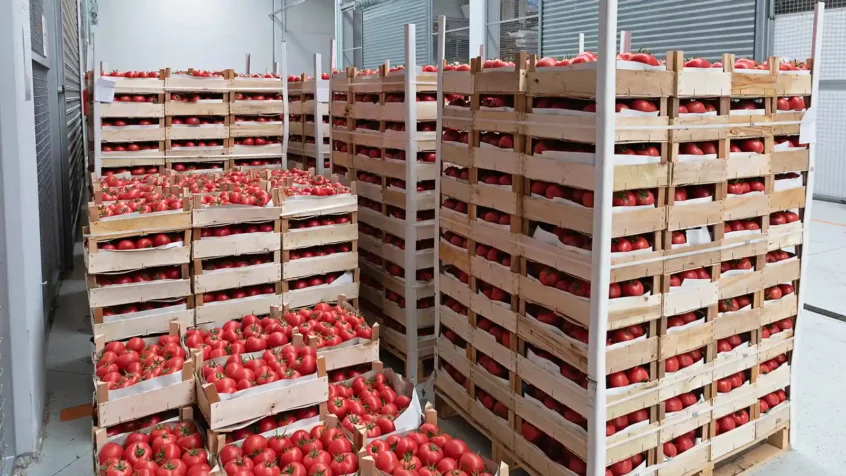Local food distribution typically involves the movement of fresh, locally grown or produced food from the point of origin to local consumers. The process can vary depending on the specific type of food being distributed, as well as the size and structure of the distribution network.
In general, local food distribution begins with the farmers or producers who grow or make the food.
When farmers or producers grow or make food locally, they often have several options for selling their products to consumers. One popular method is to sell directly to consumers through farmers’ markets, where farmers set up booths to sell their goods to people in their community. Farmers’ markets provide a great opportunity for farmers to showcase their products, interact with customers, and build relationships with their local community.
Another option is to participate in community-supported agriculture (CSA) programs. In a CSA program, consumers purchase a share of a farmer’s crop at the beginning of the season, and then receive regular deliveries of fresh, locally grown produce throughout the growing season. This helps ensure a reliable market for the farmer’s products and gives consumers a direct connection to the source of their food.
In addition to selling directly to consumers, farmers and producers may also work with distributors or wholesalers who help connect them with local restaurants, grocery stores, and other food retailers. These intermediaries can help farmers and producers reach a larger market and provide a more convenient way for consumers to access local food. However, working with intermediaries can also come with its own set of challenges, such as negotiating fair prices and ensuring the quality and integrity of the product during transportation and storage.
Once the food is harvested or produced, it may be transported to a central distribution hub where it can be sorted, packaged, and prepared for delivery to local retailers and consumers. In some cases, this hub may be a physical location, such as a warehouse or distribution center. In other cases, it may be a virtual hub, such as an online platform that connects buyers and sellers.
In some cases, the central distribution hub may be a physical location, such as a warehouse or distribution center. Farmers or producers may bring their products to this location, where they are sorted, graded, and packaged according to their quality and type. The hub may also provide additional services such as refrigeration, labeling, and barcoding to ensure the products are ready for distribution. Once the products are sorted and prepared, they are distributed to local retailers and consumers through a variety of transportation methods, such as trucks, vans, or bikes.
The central distribution hub may be a virtual hub, such as an online platform that connects buyers and sellers. This platform may allow consumers to browse local food offerings, place orders, and arrange for delivery or pickup at a convenient location. The platform may also provide additional services such as payment processing, customer support, and quality control to ensure a seamless buying experience for consumers.
Overall, the central distribution hub plays a crucial role in connecting local farmers and producers with local retailers and consumers. By providing a centralized location for sorting, packaging, and preparing products, the hub can help streamline the distribution process and ensure that local food is delivered fresh and on time.
The transportation of local food from the central distribution hub to the retailers and consumers can take several forms, depending on the size of the distribution network and the location of the end consumers.
For shorter distances and smaller operations, local food may be transported by foot or bicycle. This method is especially popular in urban areas where consumers and retailers are located in close proximity to each other, and the small size of the loads makes it easier to transport goods using eco-friendly transportation methods. In some cases, local food distributors may also use electric vehicles or cargo bikes to reduce their carbon footprint and promote sustainability.
For longer distances and larger operations, local food may be transported by trucks or vans. In this case, local food distributors may prioritize the use of electric or hybrid vehicles to reduce their environmental impact. Additionally, local food distributors may use eco-friendly packaging, such as reusable containers or biodegradable materials, to further reduce waste and promote sustainability.
In recent years, there has been a growing trend towards regional food hubs and decentralized distribution systems, which can reduce the need for long-distance transportation and promote more sustainable and resilient local food systems. By focusing on shorter supply chains and locally adapted distribution models, local food distributors can help reduce their environmental impact while also supporting the local economy and building community resilience.
Finally, local food distribution often involves close collaboration and communication between farmers, distributors, retailers, and consumers. This allows for feedback, transparency, and continuous improvement in the local food system.
GLC’s Involvement in the Food Distribution Process
We can handle your Ocean Freight with a temperature-controlled container to ensure that your foods stay fresh. We can also schedule a delivery for you with a temperature-controlled truck to ensure that your food is fresh, and it arrives in a timely manner.

